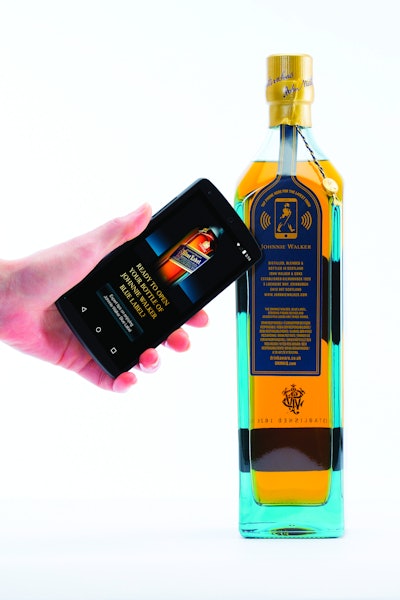Smart packaging has received its fair share of hype. From brushes that keep track of hair breakages to interactive beer bottles, new packaging technologies are offering an increasing number of ways for consumers to interact with the brands they choose to buy.
But consumers could be forgiven for thinking that the majority of innovations thus far have just been brands experimenting with little thought for utility. QSR codes, for instance, haven’t truly made their mark on consumer interactions with a branded product.
Nonetheless, when executed properly—and with a little vision—the possibilities for brands to use smart packaging are almost endless. Each new innovation offers the chance for brands to transform a physical interface into an interactive tool, thereby allowing them to add real value to their customers’ lives and build upon their brand offering.
Don’t be a smart packaging Icarus
Despite this, brands should make sure they don’t fall at the first hurdle and become a smart packaging Icarus; allow yourself to be dazzled by the possibilities, and you may find yourself flying too close to the sun, both at your brand’s and your customer’s expense.
Instead, brands should ask themselves how they can best use smart packaging to extend and elongate their interaction with consumers, beginning before the customer has even laid eyes on the product and continuing long after they’ve physically stopped using it. The real test will be for brands to use smart packaging intelligently to make an appropriate and meaningful contribution to consumers’ lives, while not losing sight of a brand’s meaning and alienating consumers in the process.
How can I host?
In order to achieve this goal, brands should begin by asking, “How can I host?” By identifying which aspect of a consumer’s life a brand is most qualified to “host,” they can maintain an authentic connection through smart packaging and use it to expand their offering outwards. Drinks giant Diageo, for example, recently launched a prototype smart whisky bottle for their premium Johnnie Walker Blue Label Whisky. The bottle incorporated a printed electronic tag, and a limited run of the product gave consumers the opportunity to download personalized VIP invitations, send personalized digital postcards, and access luxury lifestyle content and cocktail recipes.
In doing so, the drinks brand attempted to transform and influence the way consumers enjoyed their favourite spirit, showing a clear understanding of the aspect of consumers’ lives they were qualified to contribute to—their social lives and how spirits can enhance those experiences.
Moving past the ‘zero moment’
Nonetheless, with this integration comes a responsibility that has previously been reserved for digital brands alone. For instance, consider how a coffee brand can expand its presence in a consumer’s life through the use of smart packaging. Traditionally, the buyer’s first interaction with a coffee brand once they bring it home is when they groggily open their cupboard, desperate for their early morning coffee fix. With smart packaging however, the brand and consumer could literally wake up together. Imagine if the packaging could interact with the consumer’s alarm and brewer, only brewing the coffee once the consumer has stopped hitting snooze, or if it could redirect the consumer’s commute if it anticipates a delay in their usual journey.
This undoubtedly would be useful for the consumer, but from a brand perspective, it would be invaluable. The described coffee brand would have the opportunity to move past the “zero moment” before the shelf, when the consumer is deciding which brand or product to buy, and make itself indispensable to an entire aspect of the consumer’s life or part of their routine.
It must first, however, build up enough trust to be allowed to handle the minutia of its users’ lives.
Asking permission
If a brand employs smart packaging technologies, it is not only attempting to further integrate itself into consumers’ lives, but also asking permission to do so.
For instance, the coffee brand that takes charge of a consumer’s morning routine will grow to learn their patterns, where they work, and even what time they leave the house. This information could be used to serve up targeted ads on their commute, or to recommend they restock their coffee from partnering retailers when they’re running low. It wouldn’t be surprising if some consumers find these consequences hard to swallow.
Unlike digital brands, such as Amazon or Google, those brands without a history for data gathering will have to prove to consumers that they can be trusted to both safeguard it and use it responsibly. Trust is the last vanguard between the human and machine world and, in the smart packaging revolution, the brands that understand this will rise to the top.
Peter Knapp is Global Creative Officer with Landor.


























